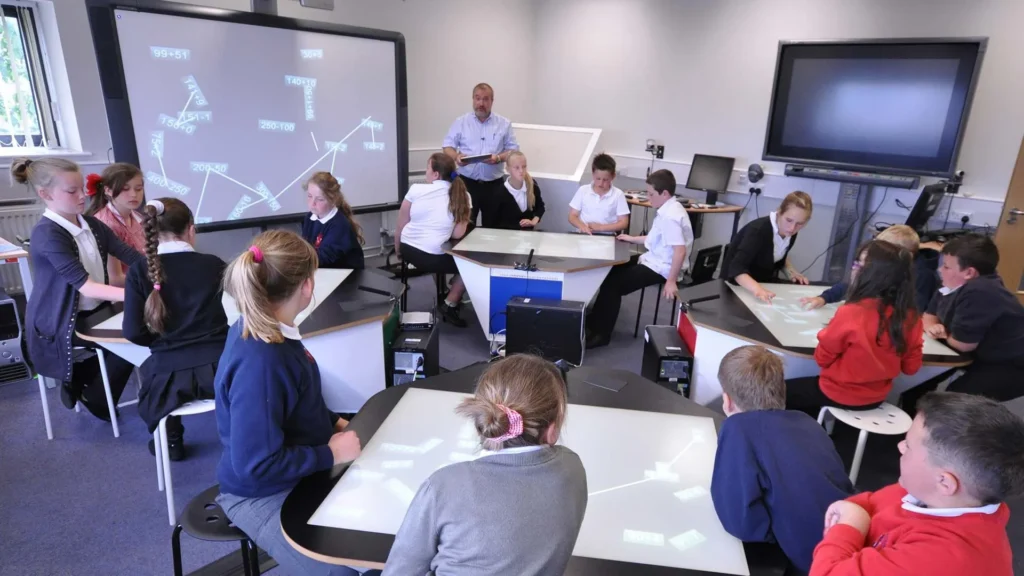Remember when the most advanced technology in a classroom was an overhead projector? Those transparent sheets and washable markers once seemed revolutionary, but today’s educational landscape has transformed beyond recognition. As we navigate this digital revolution, both students and teachers are discovering new ways to engage with learning material.
The traditional classroom setup rows of desks facing a teacher at the blackboard is rapidly becoming obsolete. Instead, modern learning environments feature flexible seating, collaborative spaces, and technology integration that allows for personalized learning experiences. This shift reflects our evolving understanding of how students learn best and the skills they’ll need for future success.
“When I started teaching twenty years ago, I could never have imagined the classroom I lead today,” says Maria Sanchez, a middle school science teacher. “My students are creating digital portfolios, collaborating on shared documents in real-time, and even using virtual reality to explore environments we could never visit physically.”
This transformation hasn’t happened overnight, nor has it been without challenges. Many educators initially approached technology with skepticism, concerned that digital tools might distract from genuine learning or create dependencies that undermine fundamental skills. These concerns weren’t unfounded we’ve all seen students who can navigate complex games but struggle with basic problem-solving.
The key, educational experts now recognize, lies not in whether to use technology but how to use it purposefully. When implemented thoughtfully, digital tools enhance rather than replace traditional teaching methods. They create opportunities for deeper learning by freeing up class time for discussion, application, and higher-order thinking.
Consider how an AI Homework Helper might support a student struggling with algebra. Rather than simply providing answers, quality digital tools offer scaffolded support, helping learners identify where they’re stuck and providing targeted guidance. The student still does the cognitive heavy lifting, but with assistance that’s available exactly when needed something even the most dedicated teacher can’t always provide to every student simultaneously.
The pandemic accelerated this digital transformation dramatically. Virtually overnight, remote learning became necessary rather than optional, forcing even technology-resistant educators to embrace digital platforms. While this transition was bumpy highlighting issues of equity and access it also demonstrated remarkable resilience and innovation within the educational community.
“I learned more about technology in three months of emergency remote teaching than in my previous fifteen years combined,” admits high school English teacher James Wilson. “Some of those tools have become permanent parts of my teaching practice, even now that we’re back in the physical classroom.”
Parents, too, gained unprecedented visibility into their children’s education during remote learning. Many developed new appreciation for the complexity of teaching while also identifying areas where traditional education wasn’t serving their children optimally. This heightened awareness has fueled demand for more personalized, flexible approaches to learning.
The classroom of tomorrow will likely blend the best aspects of traditional and digital learning. Imagine students spending part of their day in collaborative, teacher-facilitated activities and part engaged in personalized digital learning tailored to their specific needs and interests. Assessments might happen continuously rather than at designated test times, providing immediate feedback that allows for course correction.
Physical learning environments are evolving alongside teaching methods. Schools designed for the digital age feature movable furniture, multiple writing surfaces, robust connectivity, and spaces designed for different learning modes from quiet individual work to boisterous group collaboration. These flexible environments support the dynamic teaching approaches that technology enables.
However, as we embrace these exciting possibilities, we must remain mindful of potential pitfalls. The digital divide unequal access to technology and high-speed internet threatens to widen existing educational inequities if not deliberately addressed. Privacy concerns also loom large as students generate increasing amounts of data that might be used in ways families don’t fully understand or consent to.
Perhaps most importantly, we must remember that technology is a tool, not a teacher. The most sophisticated educational software cannot replace the human connection at the heart of effective education. Students still need caring adults who know them well, believe in their potential, and can inspire them to stretch beyond what they thought possible.
Conclusion
As we navigate this educational evolution, the most successful approaches will be those that harness technology’s efficiency and personalization while preserving the human relationships fundamental to meaningful learning. The future of education isn’t either digital or traditional it’s a thoughtful integration that serves each student’s unique needs while preparing them for a world we can only begin to imagine.
